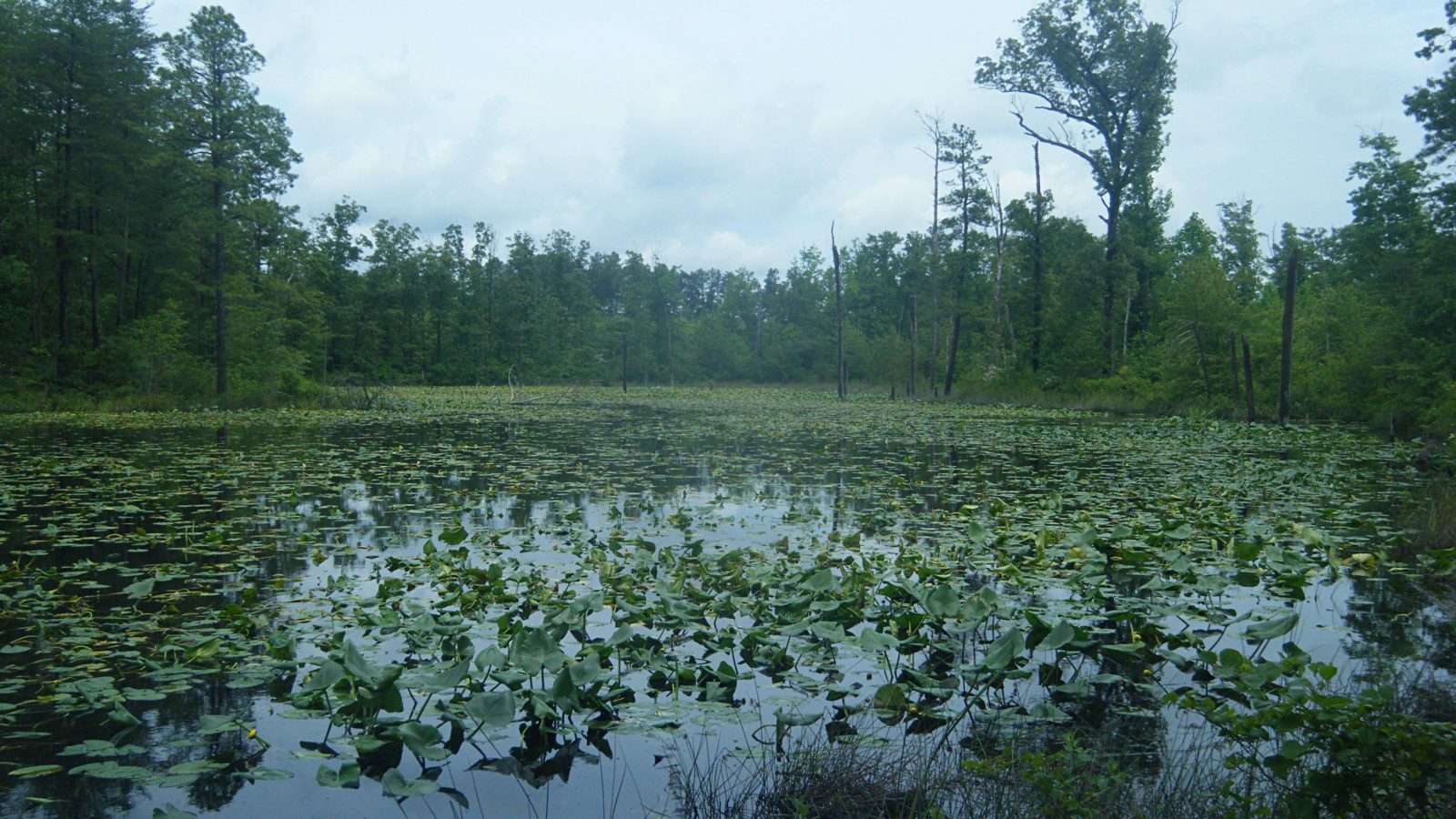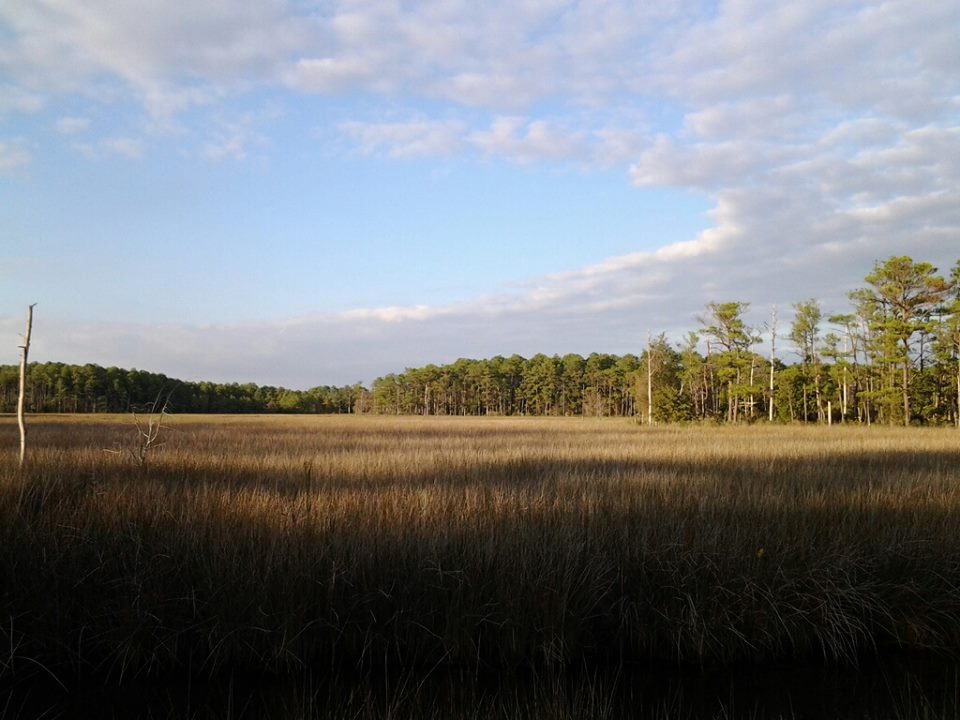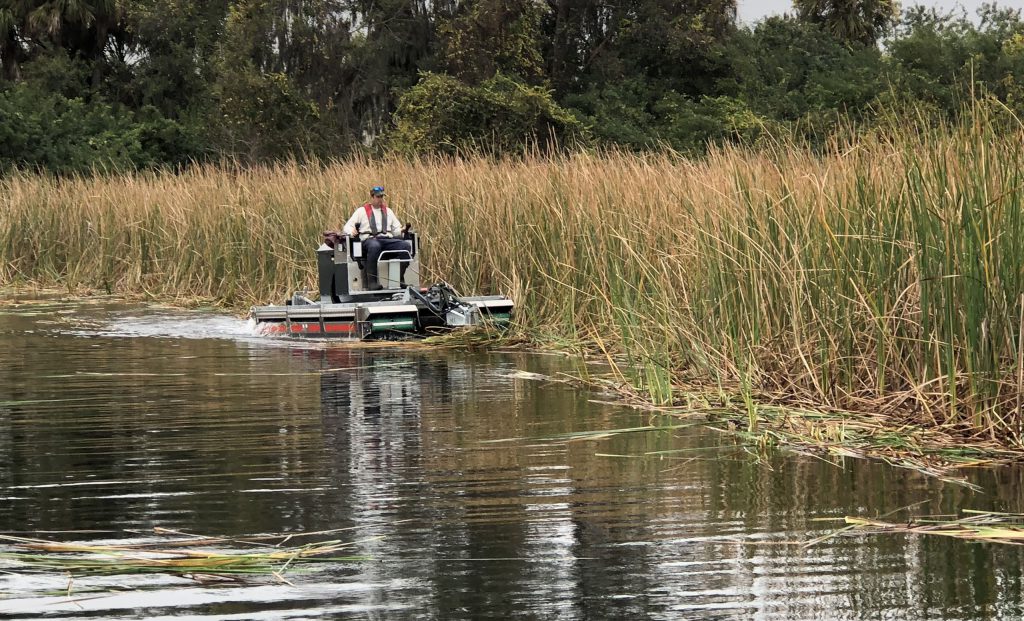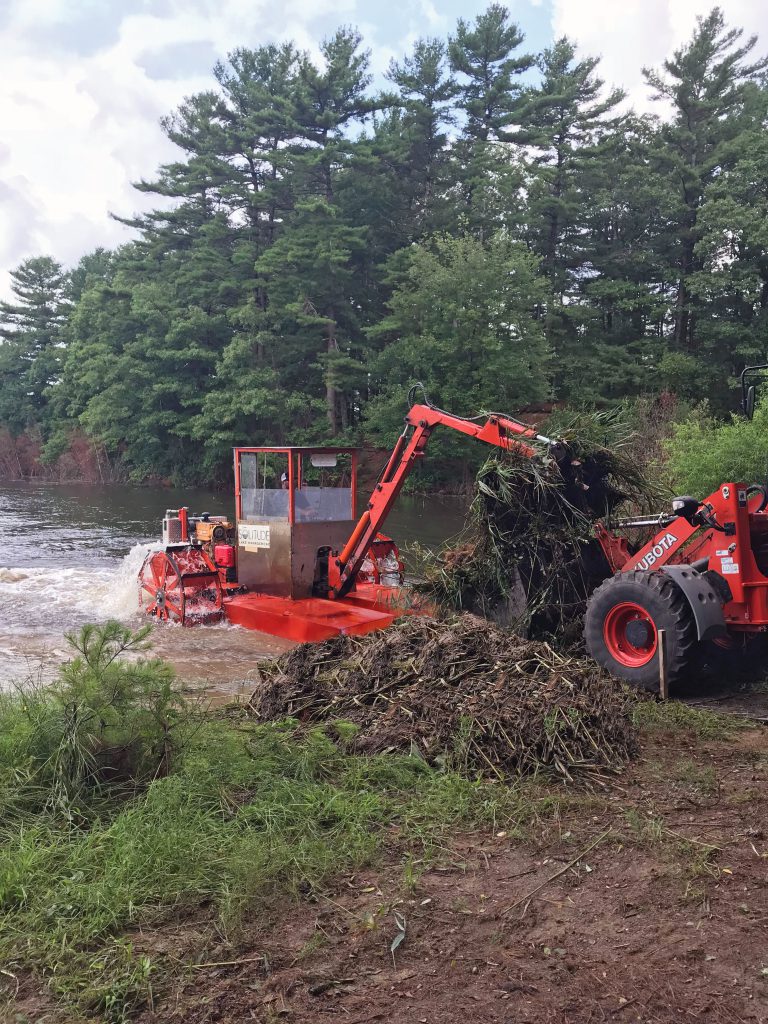
Project Background
The Mickill Pond system is a freshwater pond group located on a 15-acre private property at the southern tip of Westerly, Rhode Island, in an area known as Watch Hill. The ponds are separated from Block Island Sound by an approximate 250-foot-wide coastal dune and beach. Given the increasing development of the Rhode Island seacoast, this freshwater pond system represents a unique and desirable wetland habitat feature for the area and the state. Over the last decade, the ponds and associated wetlands became infested with non-native and invasive plant growth, specifically, common reed (Phragmites australis), porcelain berry (Ampelopsis brevipedunculata) and Japanese honeysuckle (Lonicera japonica). These species developed dense monotypic stands throughout the wetland areas and significantly encroached on the ponded areas, reducing open water. As a result of this invasive species colonization and the subsequent loss of species diversity and richness, the property owner sought to develop a project to control the invasive plant growth, restore open water and increase a diverse native plant assemblage.

Site Assessment & Plan Design
Coastal freshwater wetlands support many desirable and even rare native plant and animal species; therefore, the introduction and expansion of invasive plant growth threatens the resources’ ability to provide the habitats necessary for these species to flourish. In order to design an appropriate wetland restoration plan, the project team first cataloged plant species and mapped existing habitat zones.
The site consisted of four distinct habitat zones: 1) three ponded areas totaling approximately 1.8 acres that were dominated by the growth of white lily (Nymphaea odorata), yellow lily (Nuphar vargietum) and sago pondweed (Stuckenia pectinata); 2) maritime dune dominated by American beach grasses (Ammophila breviligulata) and northern bayberry (Myrica pensylvanica); 3) coniferous forest dominated by pitch pine (Pinus rigida) and eastern red cedar (Juniperus virginiana); and 4) a coastal wetland of approximately 3.2 acres dominated by common reed (Phragmites australis).
Based on the information gathered during the site evaluation, it was evident that there were a variety of habitat types and plant assemblages that needed to be preserved during the restoration effort in order to minimize overall disturbance and maximize site diversity post-restoration. As a result, a phased integrated management approach consisting of herbicide treatment, mechanical cutting, hydro-raking and installation of native plantings was developed and permitted with the RI Coastal Resources Management Council.

Restoration Plan
In September of 2013, the project was initiated with a foliar herbicide treatment of common reed (3.2 acres) and porcelain berry (0.5 acres). The designated growth was treated with a mixture of the USEPA registered aquatic herbicides AquaPro (glyphosate) and Habitat (imazapyr). The treatment was performed using a low-ground pressure amphibious track vehicle (MarshMaster) equipped with an elevated spray tower. This herbicide treatment approach maximizes translocation of the herbicide in the treated plants, thereby ensuring optimal systemic control. At the same time, this minimizes the potential for non-target plant impacts, as many of the desirable native plants are dormant at the time of the later season application.
During the winter following the herbicide treatment, the targeted plant biomass was cut and mulched using the MarshMaster machine outfitted with a 72-inch rotary mower deck. In an effort to evaluate the possible benefits to native plant recolonization from the existing seed bank, a large portion of the cut plant material was removed around the smaller west pond. A total of 120 cubic yards of common reed and porcelain berry biomass was removed and transported to an upland disposal site. All root material was left in place to stabilize soils until native plant growth and plantings could be established.
During the spring of 2014, native plantings were installed in the buffer zones around the west pond. These plantings consisted of eastern red cedar (Juniperus virginiana), shadbush (Amelanchier canadensis), arrowwood (Viburnum dentatum) and beach plum (Prunus maritima). The project team decided that the level of common reed regrowth, native plant recolonization and water levels should be evaluated over the course of the 2014 growing season before finalizing and implementing the wetland area planting plan. Vegetation surveys conducted during the course of the 2014 season indicated that 80-85% control of common reed and 95+% porcelain berry control was achieved by the initial herbicide treatment. In addition to this high level of target plant control, it was also noted that 25-30% natural native plant recolonization occurred within the wetland areas. Given the need for follow up treatment of the common reed regrowth and the relatively high level of natural native plant recolonization, it was decided that wetland planting would not occur around the west pond in 2014.
In order to address the common reed regrowth and provide long-term control of this invasive species, a follow up aquatic herbicide (glyphosate & imazapyr) treatment was performed. Spot treatment of the common reed regrowth was performed as a low-volume foliar application using backpack sprayers. The regrowth was accessed on foot to ensure selective application and minimize impacts to native plant growth. The treatment was again performed during the month of September. Once the common reed had been cut and water levels monitored over the course of the growing season, it was evident that the invasive growth had significantly encroached on the ponded areas over the years. Based on site evaluations, it was estimated that the pond areas had been reduced by nearly 50% in all cases due the establishment of robust common reed root mat. Considering this loss of important freshwater habitat, it was decided that mechanical hydro-raking would be used to reclaim the areas of common reed encroachment.

In the late fall 2014 into early winter 2015, mechanical hydro-raking was performed to recover shoreline areas of the ponds that were lost as a result of the common reed encroachment. A mechanical hydro-rake is a floating excavator with a York rake attachment rather than a traditional bucket. The rake is designed to comb through the upper layers of sediment and remove targeted plants and root material. The barge is paddle-wheel driven to facilitate operation in shallow water (<2 feet) and it can effectively work to depths of about 12 feet. It works from the water, thereby avoiding damage to sensitive shoreline habitat and property. At this particular project, the hydro-rake was tasked with removing approximately 1.5 acres of dense common reed root mat that averaged 1-2 feet thick. The hydro-rake has no on-board materials storage, so each rake-full of material had to be deposited on shore. A single shore-based off-loading site was selected for each pond in order to minimize the disturbance associated with the loading and trucking of the removed materials. The hydro-rake deposited the removed material into a steel containment tub on the pond shoreline where it was then loaded into 30 cubic yard roll-off containers for transport to the final disposal site. Due to the size and limited access for disposal equipment, the two eastern ponds required the use of a small transport barge and a low-ground pressure Posi-Trac skid steer loader to assist in the disposal operation.
Due to heavy rains experienced during the project and general site characteristics, several operational complications developed during the course of the project. Most of these issues centered on disturbed slope erosion and maintenance of suitable truck access for removal of roll-off containers. Typical erosion controls consisting of 12-inch coir and straw wattles were sufficient to address erosion concerns during the project. In addition to all the site maintenance protocols employed, 2-foot by 8-foot polyethylene matting was installed within the designated off-loading areas to minimize site disturbance and allow proper truck access.
The seven-week hydro-raking effort resulted in an approximate 1.5-acre increase in open water habitat and the removal of an estimated 1800 cubic yards of common reed root material. Following completion of the hydro-raking work, disturbed shoreline areas were regraded to pre-existing conditions with low-ground pressure equipment, stabilized and seeded.
Conclusion
Phases 1 and 2 of the restoration project were completed in December of 2015. Areas completed in Phase 1 of the project show widespread colonization by a variety of herbaceous native wetland plant species. Native plant cover throughout the former common reed and porcelain berry monocultures is currently estimated in the 50-60% range. Some isolated areas of low density common reed growth persist throughout the wetland areas, but is expected to be addressed with small-scale, highly selective herbicide application techniques – cut stem application, hand wicking and low-volume foliar spray – in the fall of 2016.
This coastal freshwater wetland/pond restoration project is the first in the state of Rhode Island to successfully utilize mechanical hydro-raking to reclaim open water areas degraded by non-native common reed colonization. Given that common reed is a significant problem throughout many coastal and inland wetland areas, this project, based on preliminary successes, potentially represents a new strategy for the long-term control and/or eradication of this invasive species within these sensitive environments.
Aquatic Weed & Algae Control Solutions
SOLitude Lake Management is committed to providing full service lake and pond management services that improve water quality, preserve natural resources, and reduce our environmental footprint. Our services include lake, pond and fisheries management programs, algae and aquatic weed control, mechanical harvesting, hydro-raking, installation and maintenance of fountains and aeration systems, water quality testing and restoration, bathymetry, lake vegetation studies, biological assessments, habitat assessments, invasive species management and nuisance wildlife management. Services, consulting and aquatic products are available to clients nationwide, including homeowners associations, multi-family and apartment communities, golf courses, commercial developments, ranches, private landowners, reservoirs, recreational and public lakes, municipalities, parks, and state and federal agencies. Learn more about SOLitude Lake Management and purchase products at www.solitudelakemanagement.com.









